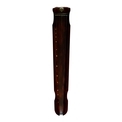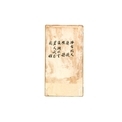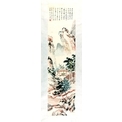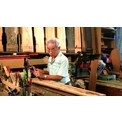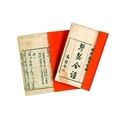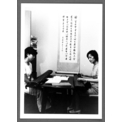-
History & Society
- Education in Pre-war Hong Kong
- History of Taikoo Sugar Refinery
- Hong Kong Products Exhibition
- Local Festivals Around the Year
- Post-war Industries
- Pre-war Industry
- The Hong Kong Jockey Club Archives
- Tin Hau Festival
- Memories We Share: Hong Kong in the 1960s and 1970s
- History in Miniature: The 150th Anniversary of Stamp Issuance in Hong Kong
- A Partnership with the People: KAAA and Post-war Agricultural Hong Kong
- The Oral Legacies (I) - Intangible Cultural Heritage of Hong Kong
- Hong Kong Currency
- Hong Kong, Benevolent City: Tung Wah and the Growth of Chinese Communities
- The Oral Legacies Series II: the Representative List of the Intangible Cultural Heritage of Hong Kong
- Braving the Storm: Hong Kong under Japanese Occupation
- A Century of Fashion: Hong Kong Cheongsam Story
Geography & EnvironmentArt & Culture- Calendar Posters of Kwan Wai-nung
- Festival of Hong Kong
- Ho Sau: Poetic Photography of Daily Life
- Hong Kong Cemetery
- Sketches by Kong Kai-ming
- The Culture of Bamboo Scaffolding
- The Legend of Silk and Wood: A Hong Kong Qin Story
- Journeys of Leung Ping Kwan
- From Soya Bean Milk To Pu'er Tea
- Applauding Hong Kong Pop Legend: Roman Tam
- 他 FASHION 傳奇 EDDIE LAU 她 IMAGE 百變 劉培基
- A Eulogy of Hong Kong Landscape in Painting: The Art of Huang Bore
- Imprint of the Heart: Artistic Journey of Huang Xinbo
- Porcelain and Painting
- A Voice for the Ages, a Master of his Art – A Tribute to Lam Kar Sing
- Memories of Renowned Lyricist: Richard Lam Chun Keung's Manuscripts
- Seal Carving in Lingnan
- Literary Giant - Jin Yong and Louis Cha
Communication & Media- Hong Kong Historical Postcards
- Shaw Brothers’ Movies
- Transcending Space and Time – Early Cinematic Experience of Hong Kong
- Remembrance of the Avant-Garde: Archival Camera Collection
- Down Memory Lane: Movie Theatres of the Olden Days
- 90 Years of Public Service Broadcasting in Hong Kong
- Multifarious Arrays of Weaponry in Hong Kong Cinema
-
History & SocietyGeography & EnvironmentArt & Culture
-
View Oral History RecordsFeatured StoriesAbout Hong Kong Voices
-
Hong Kong Memory
Haimenchao (2)
This qin is named Haimenchao. It was made by Choi Chang-sau in the mid 1980s. This photo shows the back of Haimenchao in Zhongni style.
Date Mid 1980s Style Zhongni Size Length (Whole 122.5 cm, Strings 112 cm); Width (Forehead 18.5 cm, Shoulder 20 cm, Tail 14.5 cm); Thickness 5.4 cm Weight 3 kg Body Chinese parasol top; Chinese fir bottom Accessories Mother-of-pearl inlay markers; Buffalo horn tuning pegs; Rosewood feet; Ebony bridge and tail pieces Inscription [Chinese inscription](一)軫池下方篆書「海門潮」
(二)龍池兩旁草書銘文:
唯天有根 唯海有門 龍湫之瀑 華頂之雲
唯潮有音 唯桐有心 湘靈之瑟 成連之琴
灑灑十指 湯湯千里 明月前身 浮雲知己
戊寅選堂書之
(款下篆文「饒宗頤印」、「選堂」方印各一)
(三)龍池下方篆文「昌壽精斲」圓印、「存誠養德」方印、「傳世之寶」方印
(四)鳯沼左方篆文「昌壽」方印Maker's Note This qin is inscribed with Haimenchao, the eighth poem in the Jingzhai Shi’er Qinming. Xu Wenjing was originally a native of the coastal city Haimen (present-day Jiaojiang district in the city of Taizhou). People Choi Chang-sau Object Musical instrument Material Type Image Collection The Legend of Silk and Wood: A Hong Kong Qin Story Source Courtesy of Choi Chang-sau Repository Choi Chang-sau Note to Copyright Permission for use in Hong Kong Memory is given by Choi Chang-sau Accession No. lcs-hkqs-0069 Copyright © 2012 Hong Kong Memory. All rights reserved.







